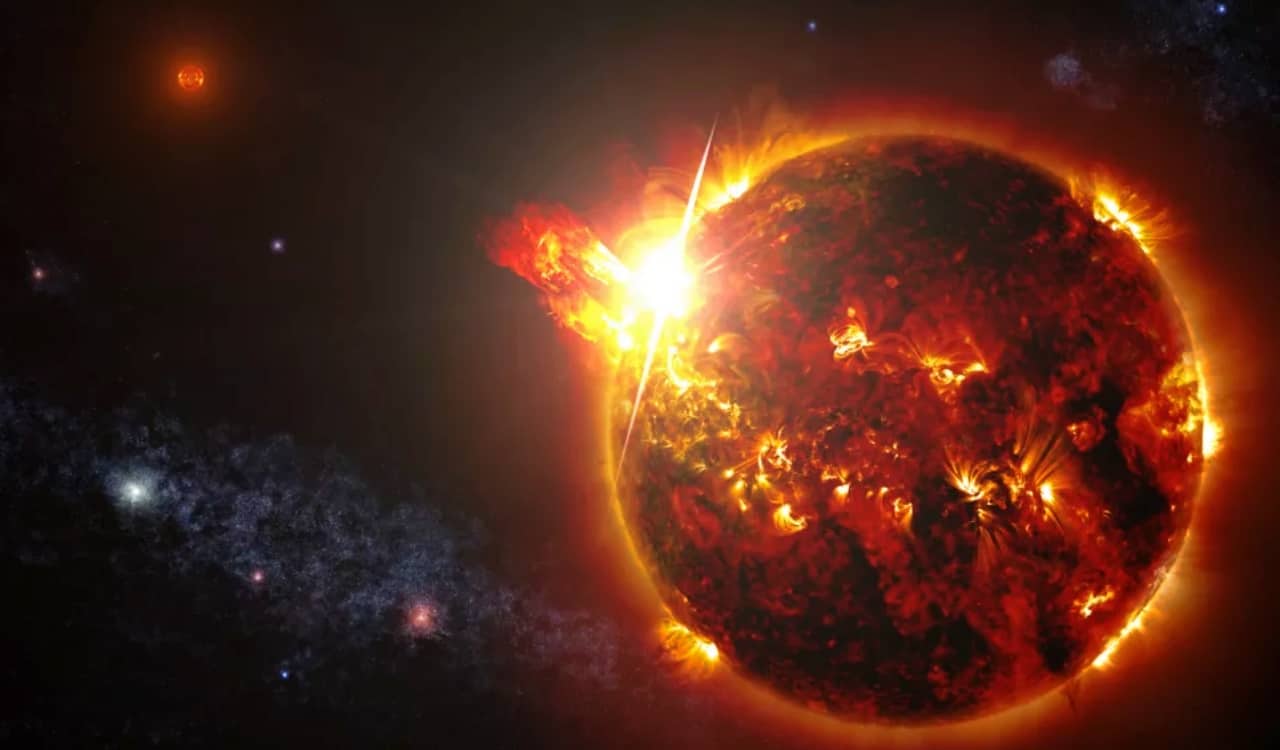“Space, the final frontier.” The infamous line from Star Trek is very appropriate here, as there is so much about space that we do not know. Sort of like how North America was for the Europeans centuries ago or the oceans of today, there is so much we do not know about outer space. Luckily, we are getting a grasp on how stars in our universe work currently. Yet there are some stars we know very little about. Meanwhile, there are even stars that are theoretical in nature but very possible to see one day. Of course, that might be millions to billions of years from now that some of those could be seen.
Currently, we use a Star Class System that is based on the temperature a star happens to be for classification. People often assume it is based on color but this is just a byproduct of a star’s temperature. It is based on the Kelvin temp chart, with the hottest rating from 33,000K and up to the lowest at 3,000K and under. The Class System runs as so: O, B, A, F, G, K, and M. This will be important to remember, as we will bring up Star Classes a lot. That said, let’s get started on this breakdown of (mostly) all the types of stars in our universe!
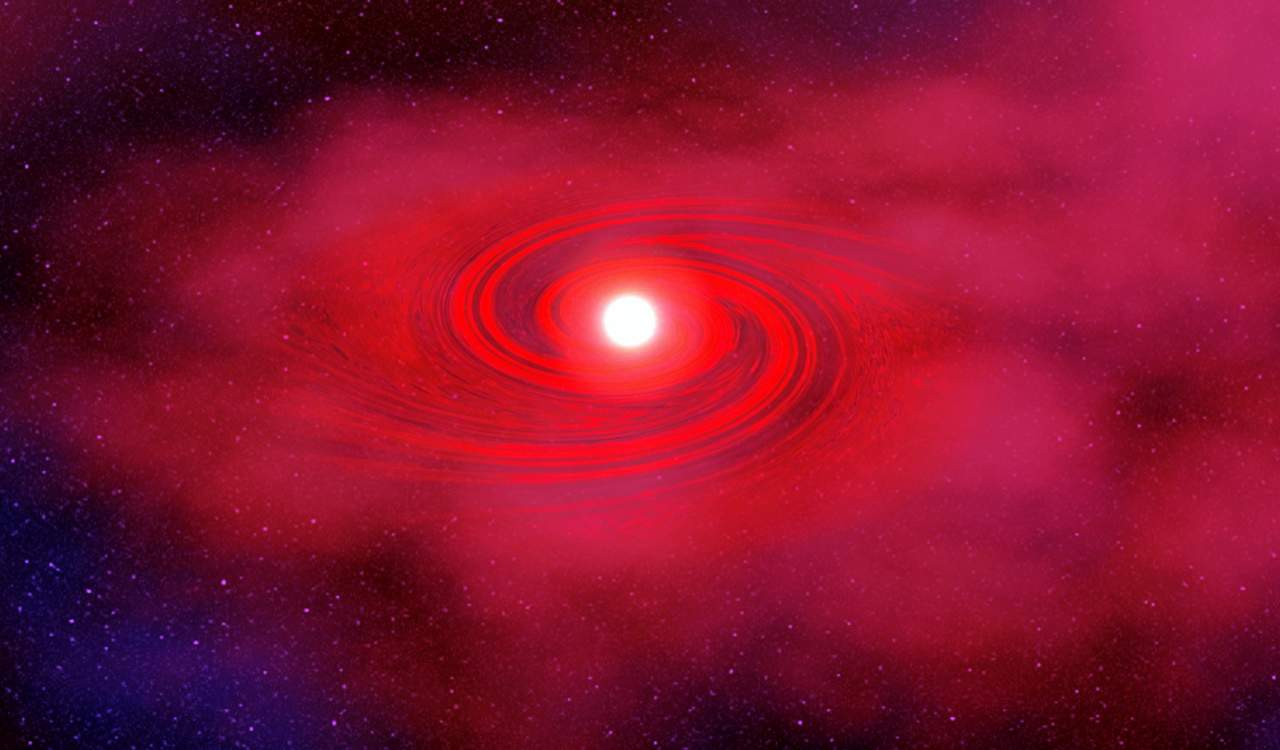
Protostars
- Lifespan: Unknown
- Class: Undetermined
Protostars are young stars in the beginning stages of becoming full-fledged stars. They are often still in formation, gathering mass from their parent’s molecular cloud. Due to this being the earliest phase known of stellar evolution, it is not usually known what comes beforehand. Star formation can take a long time, but in universal terms, it can be about as long as the formation of a human child in its mother’s womb. For low-mass stars like our Sun, formation takes roughly 500,000 years.
Larger stars will take longer to develop. The process of development usually begins when a molecular cloud fragment collapses under the force of its own gravity. From here a darkened, pressure-supported core will form inside this collapsing fragment. A molecular gas build-up will take place, then once all the gas that can enter is completely gone, it moves from a Protostar to something known as a T Tauri star or Pro-Main-Sequence star.

T Tauri Stars
- Lifespan: Less Than 10 Million Years
- Class(es): Multiple
Before we dive too far into these types of stars, you should be aware that there are several sub-types within. We could not possibly cover them all, as each differs ever so slightly compared to others. Thus, we’re going to discuss the overall type and why they are important. T Tauri stars are part of the class of “variable stars,” which are stars that vary in brightness when seen from Earth. These stars are usually among the youngest in the universe, as all are less than ten million years old.
This might seem like a long time but in universal terms, these stars are still babies. T Tauris are usually going to be found in molecular clouds, and tend to have distinct identifiable characteristics, like strong chromospheric lines. Naturally, they are also identified by the varying brightness they have too. These stars will usually become brighter and often larger than they are now, as their luminosity and temperature will increase. T Tauri stars are 3 solar masses or lower, so once they get beyond this and develop a radiative zone, they move into another category.
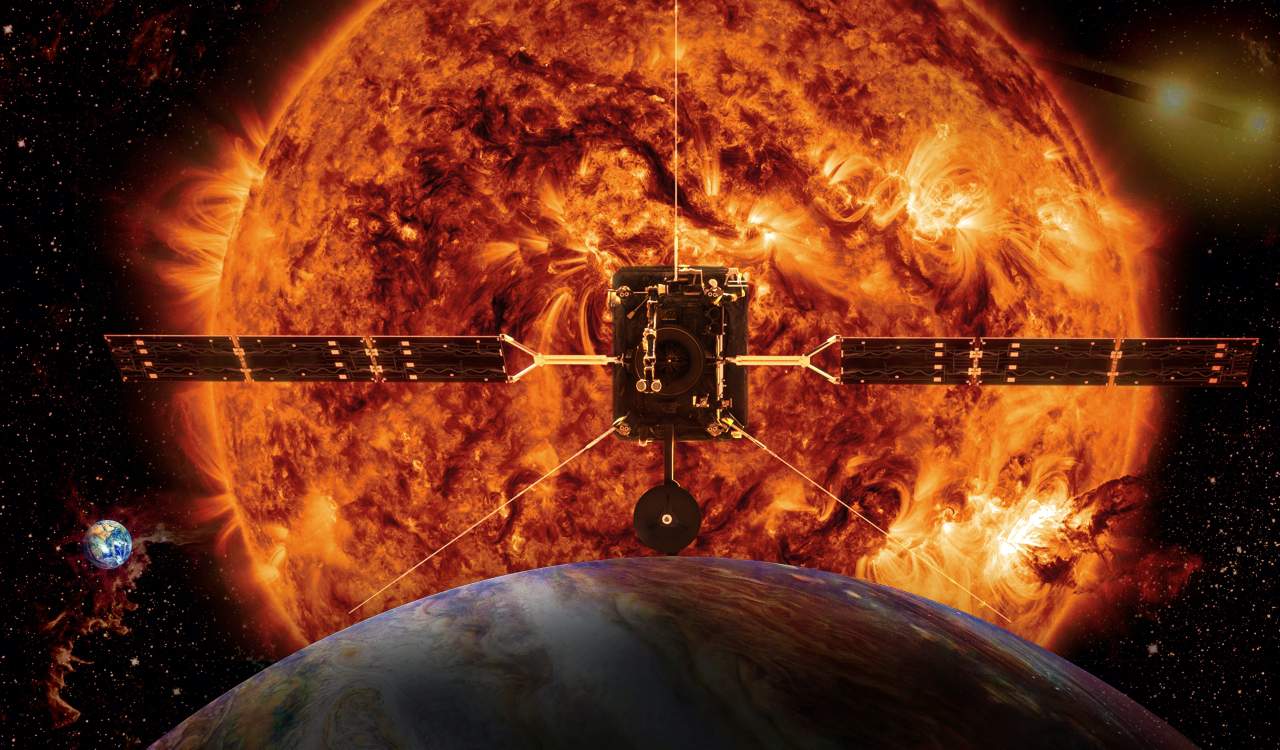
Main-Sequence Stars
- Lifespan: 20 Million to 10 Billion Years
- Class: Various
We referenced the two main beginning stage star types, so it only makes sense to reference the stars in our universe as we mostly know them. That is their Main-Sequence star form! These stars are specifically known by their appearance on the Hertzsprung-Russel diagram plot. This plot breaks down a band of stars based on color vs brightness, with color-magnitude being critical to the star’s classification. The stars on these plots are the most common star types in the universe. Our Sun, for example, is part of this plot. These stars will form after the condensation and ignition of a star.
Upon doing this, it generated thermal energy within its dense core region. That occurs via nuclear fusion of hydrogen, resulting in helium. During this process, it will find a position that will be determined by the mass it reaches. While chemical composition and age play a role, mass is a huge part due to the gravity involved. One would assume it would be better to be larger, but the more massive a star tends to be, the shorter its lifespan will be on the main sequence. Once hydrogen fuel at its core is consumed, the star will evolve past the main sequence and into other categories.

Dwarf Stars
- Lifespan: Potentially Trillions Of Years
- Class(es): M, K, G, F, B
The smallest of the known stars in our universe, Dwarf stars are often pretty incredible. A lot of people will confuse dwarf stars with being uncommon. In reality, they are actually a version of the main-sequence star. In fact, they are even the most common of all the main-sequence star versions. The big problem with this term is that astronomers also began to use it for celestial bodies that are not actually stars. As a result, “dwarfs” are the most common celestial body in our known universe.
They felt they had to do this because there are several objects of the same size. While this might include celestial bodies that are not stars, it also includes stellar remnants of dead stars or objects that are simply no longer a star. This is critical because it means there could be objects in our universe that may have been a star but were thought to be something else. In fact, some believe there are planets that were failed stars but clearly became a big part of a specific system. Dwarf stars are also the longest-lived of each star type. Even red dwarfs have yet to die off, so their lifespan could be potentially trillions of years.
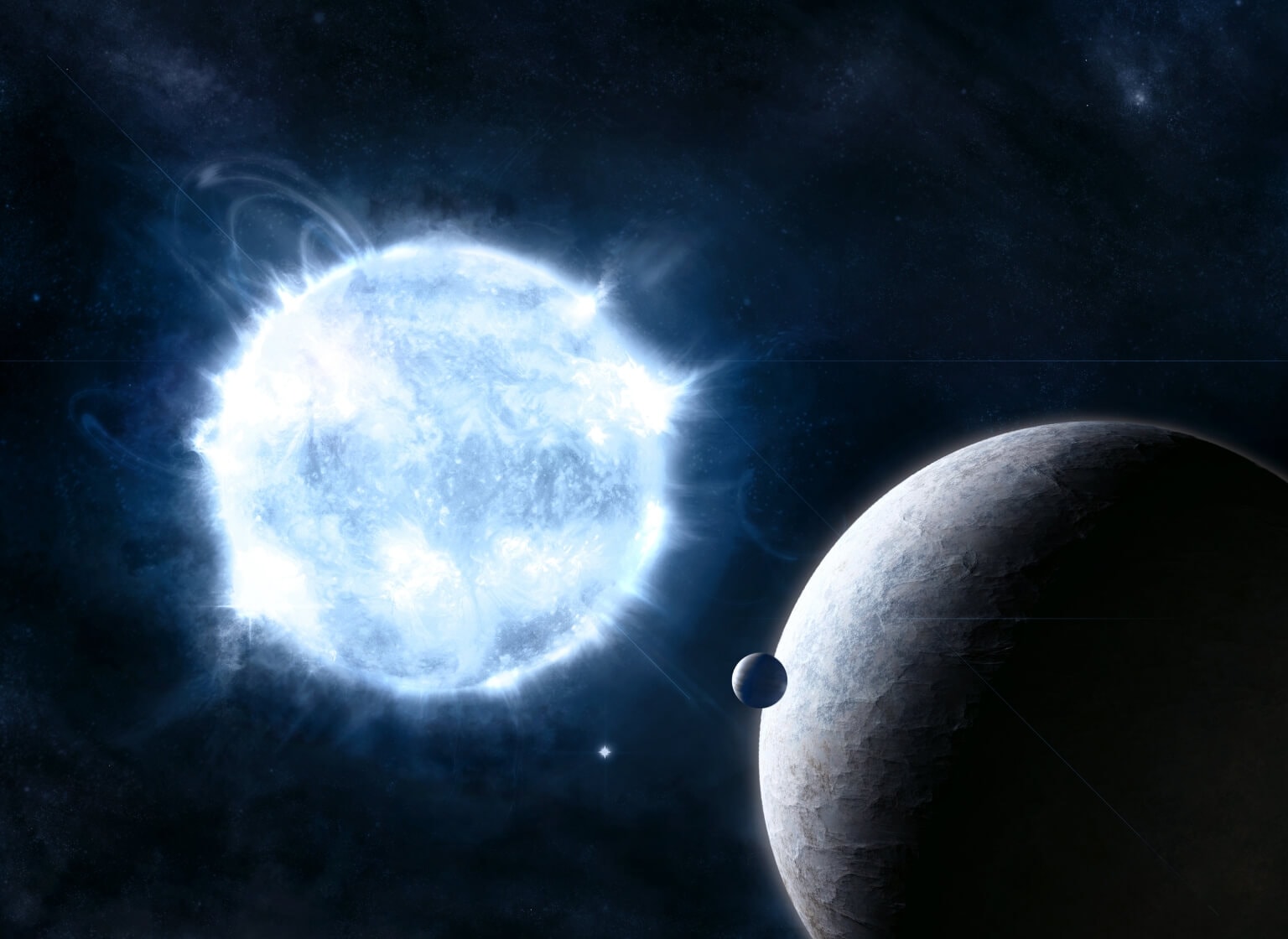
Supergiant Stars
- Lifespan: Few Hundred Thousand to 30 Million Years
- Class: A, F, G, K
It should give away in the name that Supergiant stars are going to be pretty massive. Usually, these stars will be the brightest visible to us. They are also the most common large star, so they will be the most common for us to see with the naked eye or with a normal telescope you could get at a local store. On the Hertzsprung-Russell diagram, they are second from the top in absolute visual magnitude. This is the scale that determines the brightness of a celestial object, such as a star.
The brighter a celestial object is, the lower its number will be. Once you reach negative numbers, you’re seeing the brightest known celestial bodies. Supergiant stars will usually fall within the -3 to -8 range, which should tell you they are incredibly bright. Most tend to be high in temperature along with this. Depending on the star, Supergiants can be 3,400 to over 20,000 Kelvin. The temperature will also determine their color and even their potential lifespan. However, the larger the star is…the lower its lifespan.
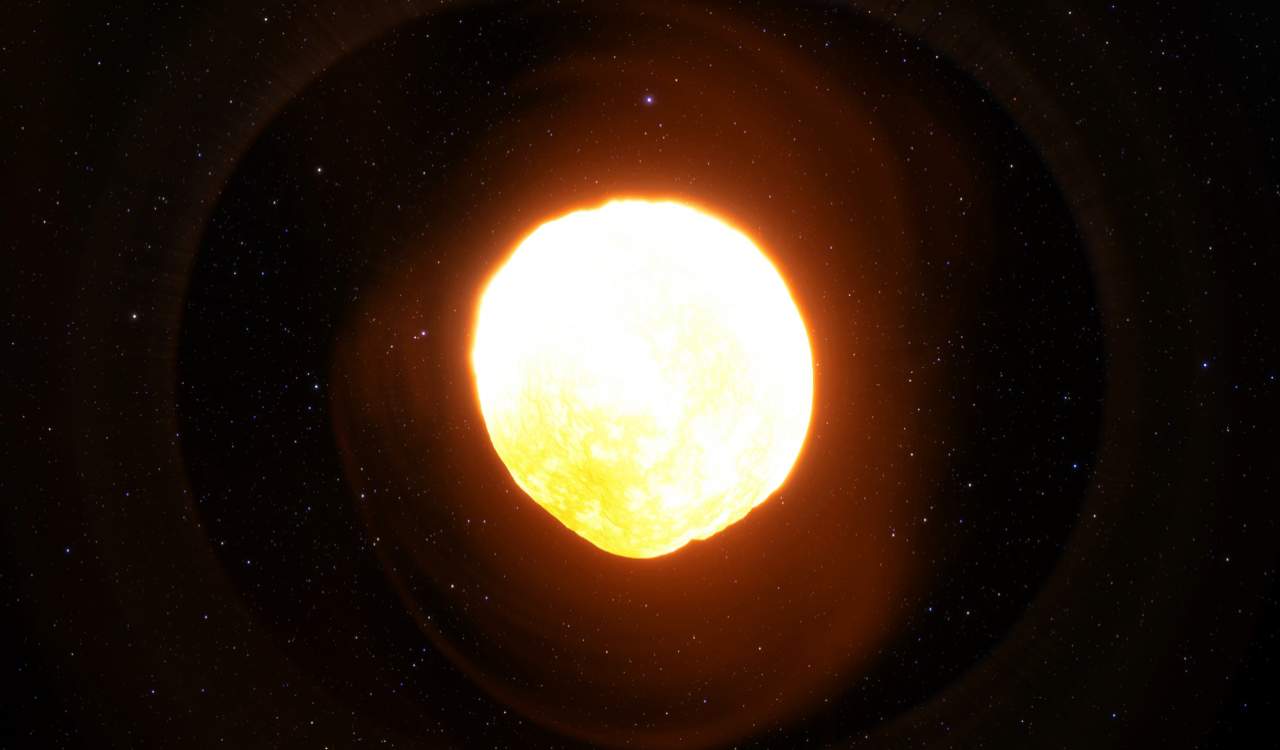
Hypergiant Stars
- Lifespan: A Few Million Years
- Class: A, F, G, K
Hypergiant stars are the largest known stars in our universe. Among all known stars, they are the rarest for anyone to come across in our universe. These stars will have a very high mass and size, with extremely high luminosity levels. On the HR diagram, they are at the top of the list regarding absolute visual magnitude. They “begin” at the -10 scale and can get much higher than this too. The potential scale they can reach is unknown as they are the brightest known celestial bodies. Therefore, it is impossible to know how much brighter they can be compared to other stars.
That said, scientists love these stars because they are first easier to see and study. They give them a chance to easily study stellar evolution due to the detail they can get from these massive stars. In fact, a lot of our supernova studies and overall stellar evolution knowledge are likely thanks to hypergiants. These stars will differ in their classification, often due to the various temperatures. Most hypergiants tend to be blue, although there are yellow and red versions too. The size of these stars is not helpful to them. Their lifespan is shorter than any other star version, only reaching a few million years at the most.
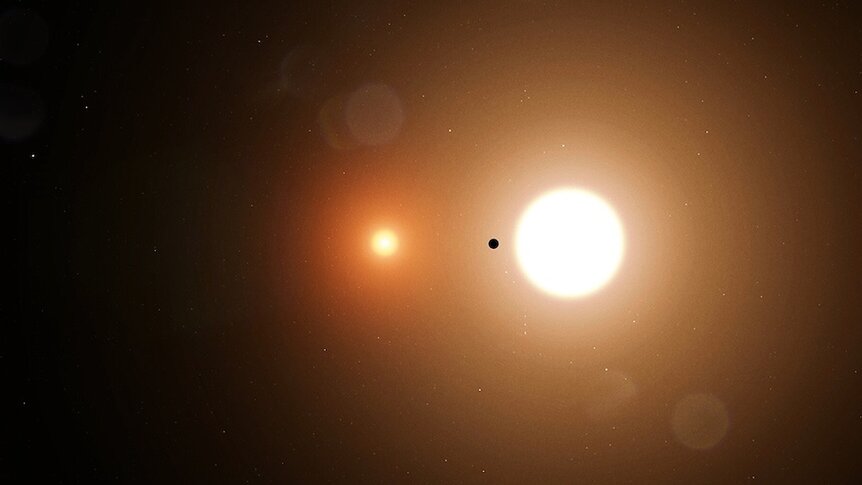
Binary Stars
- Lifespan: 8 to 14 Billion Years
- Class: Various (due to multi-star differences)
You’ve likely seen a binary star system in the past via the original Star Wars film. If you recall, we meet Luke Skywalker when he is on the planet Tatooine. There are many more systems like this in the series. We have known these systems existed dating back to 1890. Since then, several more systems like them have been found. Of course, “binary” is the big word for this. These systems will have two stars that simply orbit around a common barycenter. Both stars can be the same size or wildly different sizes. We also used to assume life could not live in these systems, but scientists now believe it is possible.
Systems like this often appear distant to the naked eye, and as a single point of light. Yet when you see them through proper telescopes, you’ll see the two-star system. Binary stars have been found more but they are by no means common. Astrophysicists love these stars because they can properly calculate the masses of component stars using their orbit. That can then give them an indirect picture of their radius and density. This, in turn, leads to finding the mass-luminosity relationship that allows them to measure other single mass stars.

Eclipsing Binary Stars
- Lifespan: Numerous
- Class: N/A
Eclipsing Binary stars are really awesome. They are obviously two or more stars in the same system, but they are unique compared to other binary stars. With these, the stars’ orbit plane lines up perfectly. It lies so close to the line of sight that anyone in a star system like this could literally experience multiple solar eclipses each day without fail. It is widely assumed that any time you have more than two stars in the same system, you’ll likely see some eclipsing issues like this.
Perhaps the most famous example of this is in Algol, a triple-star system within the Perseus constellation. In these cases, it is usual that each star will not be the same size. Triple-star systems tend to have at least one dwarf star. Some actually have two, which can be critical when it comes to life. Binary star systems would likely struggle to have life as we know it due to the massive heat. Yet those with smaller stars, particularly those that cross eclipsing paths, life could be possible.
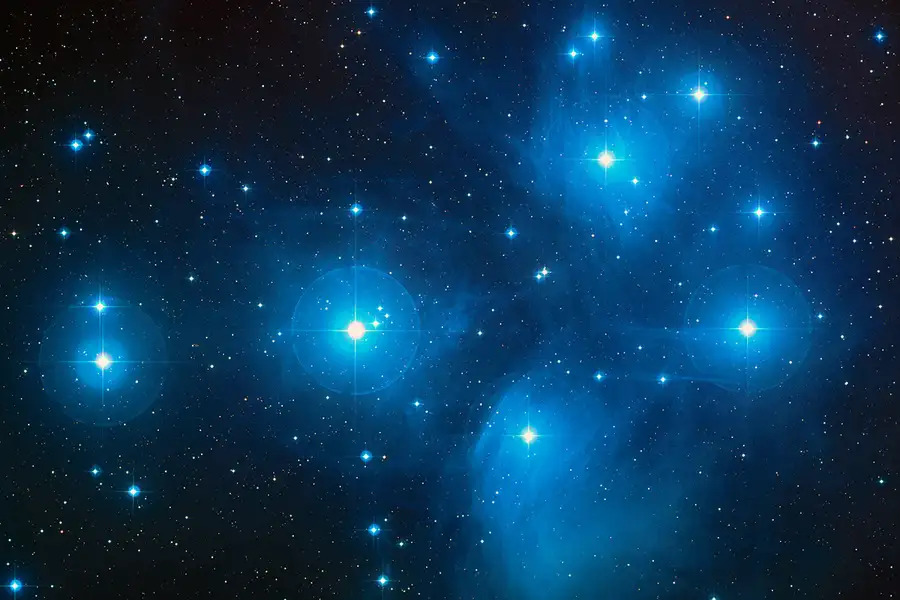
Blue Stars
- Lifespan: Around 10 Million Years
- Class(es): O & B
There are actually many types of Blue stars, which we’ll go over soon. It is actually quite likely you’ve seen a blue star, potentially even with the naked eye. That tends to be due to the blue stars ranking as the hottest in the universe. That puts them in the O and B class of stars. Stars in these classes will be 10,000 Kelvin minimum and up. This temperature gives them their blue color as well as their impressive brightness. These stars in our universe also tend to be larger on average.
Blue stars are roughly 3 times the mass of our own Sun. Interestingly, most stars that tend to be on the larger size chart tend to appear blue to our eyes. Due to their high temperature and size, blue stars close enough for us to see on Earth will often be the brightest when seen with the naked eye. Some could be 1,000 lightyears away and shine brighter than stars only 3 lightyears from Earth. Sadly, these stars tend to die the fastest. A large mass and high temperature will not equal a long life.
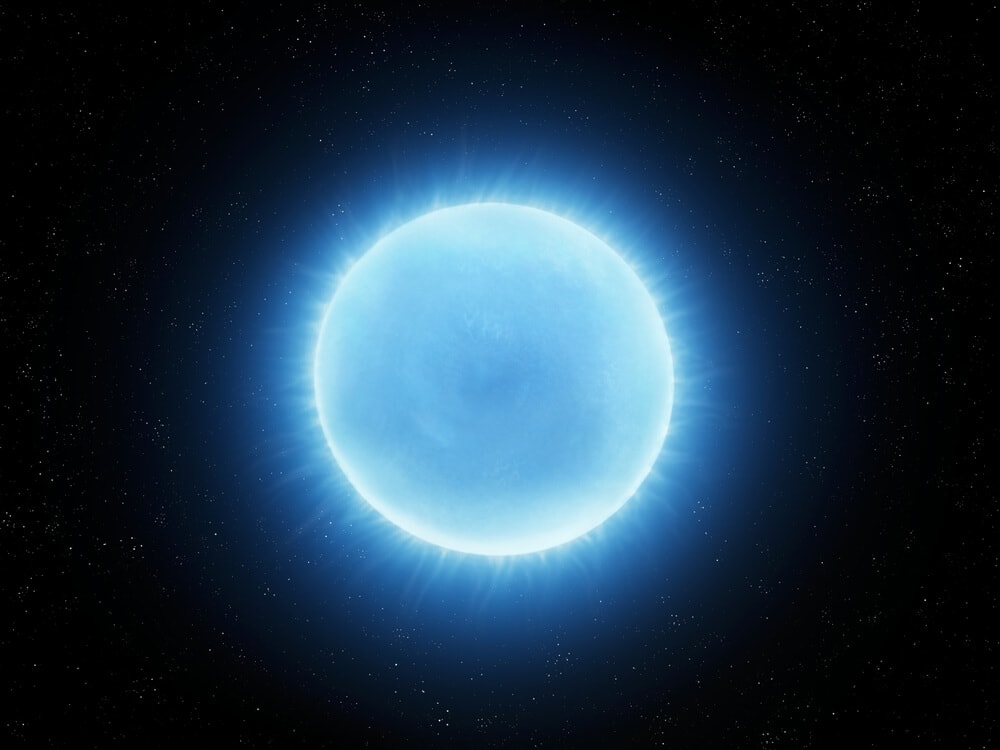
Blue Giant Stars
- Lifespan: Few Million To 10 Million Years
- Class(es): A, F, G
We should point out that the term “Blue Giant” is often mistaken for other high-mass, bright stars in our universe. This can include other main-sequence stars. However, not all giants are part of the Blue Giant category just because they are larger with a high temperature. Blue Giants rank at Class III or II on the Hertzsprung-Russell diagram, putting them just to the right of main-sequence stars on the diagram.
Regarding the main class based on the Kelvin temperature, they might fall anywhere between A to G. This is why the Blue Giant term will typically apply to several different types of stars in various development phases. They are evolved stars that move beyond the main sequence but might differ wildly after that. This could be why they are classified as stars in a specific region on the HR Diagram. Blue Giants tend to be rare because they form from much larger parental stars on top of the fact that blue stars in general live a much shorter life compared to other stars.
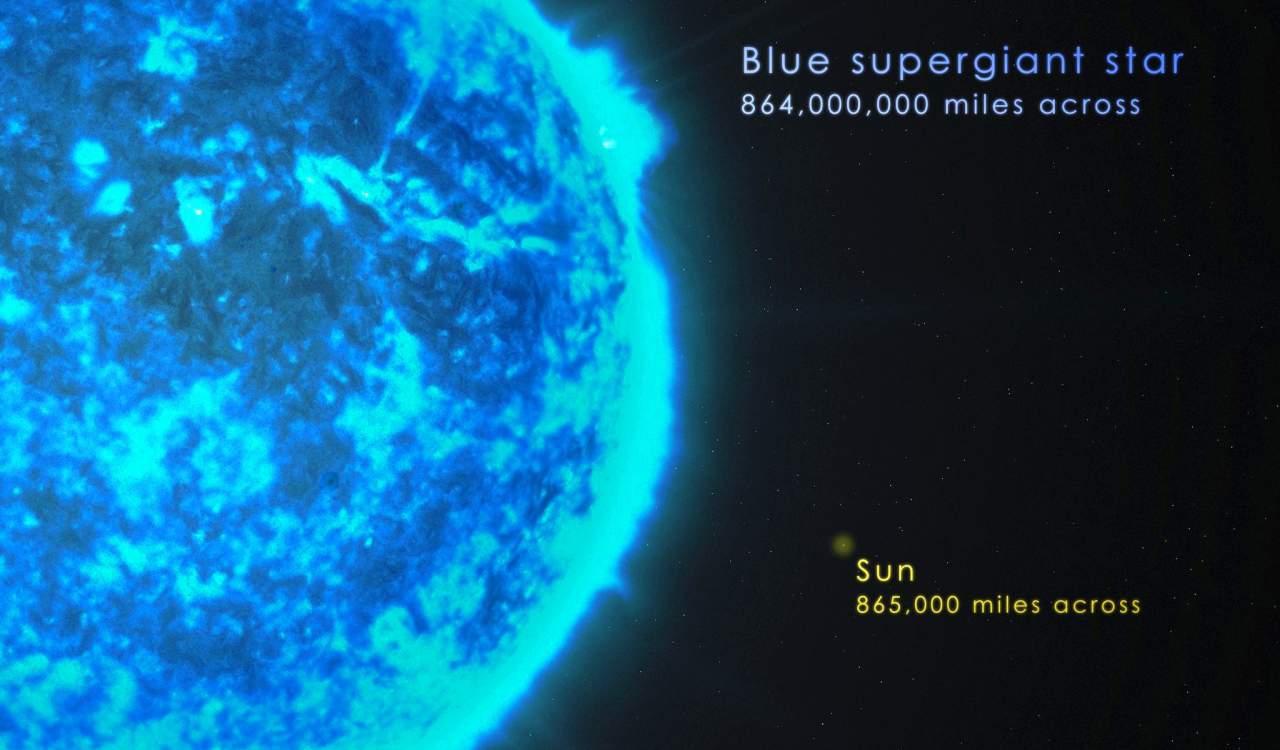
Blue Supergiant Stars
- Lifespan: Few Million Years
- Class(es): O & B
Like with other blue stars in our universe, we rank Blue Supergiant stars based on where they fall in the HR Diagram. These stars are found at the top left of the diagram, as well as both above and to the right of main-sequence stars. While Blue Supergiants are not the largest supergiant star, they are both incredibly hot and bright. Surface temperatures are estimated to be between 10,000 to 50,000 Kelvin.
This could be why they are also referred to as “OB Supergiants.” Of course, Class B temperatures fall between 10,000 to 33,000 Kelvin while Class O will be anything higher than the 33,000 Kelvin temperature. Naturally, due to their far higher mass compared to other stars, they will have a lot of brightness but a much lower lifespan. Blue stars only decrease in their lifespan the larger they are. Thus, Blue Supergiants might live a few million years. Yet in that time, they will be 10,000 times brighter than our Sun.
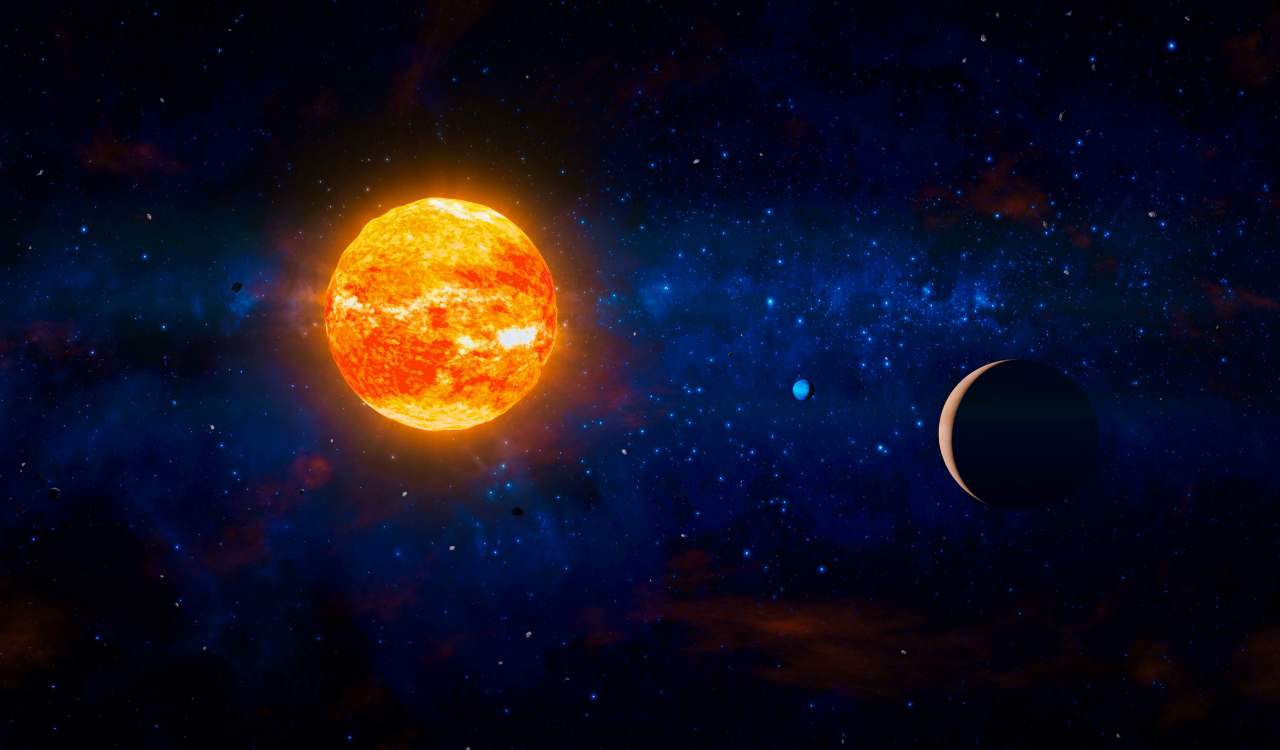
Red Giant Stars
- Lifespan: A Few Thousand To 1 Billion Years
- Class(es): M to K
Red stars, in general, tend to be cooler than other stars. We do not mean “cool” in the case of awesome, but temperature. In fact, red stars will usually be the coldest even when they are large. A Red Giant is going to give off a lot of light, but ironically they have a low or mid-range mass. By the time a star either reaches red or starts off, they are reaching the late stellar evolution period. Just because they are cooler does not mean they are made of ice.
Rather, the surface temperature for Red Giants is going to be around the 5,000 Kelvin mark. This means it will be around 8,700 degrees Fahrenheit. Most of the time, a Red Giant will be another color first. Usually, this will be yellow, orange, or a combination of the two. Many of the most well-known bright stars will be Red Giants. This is simply because they are the most common, not because they give off the most light. However, they do still give off quite a lot.
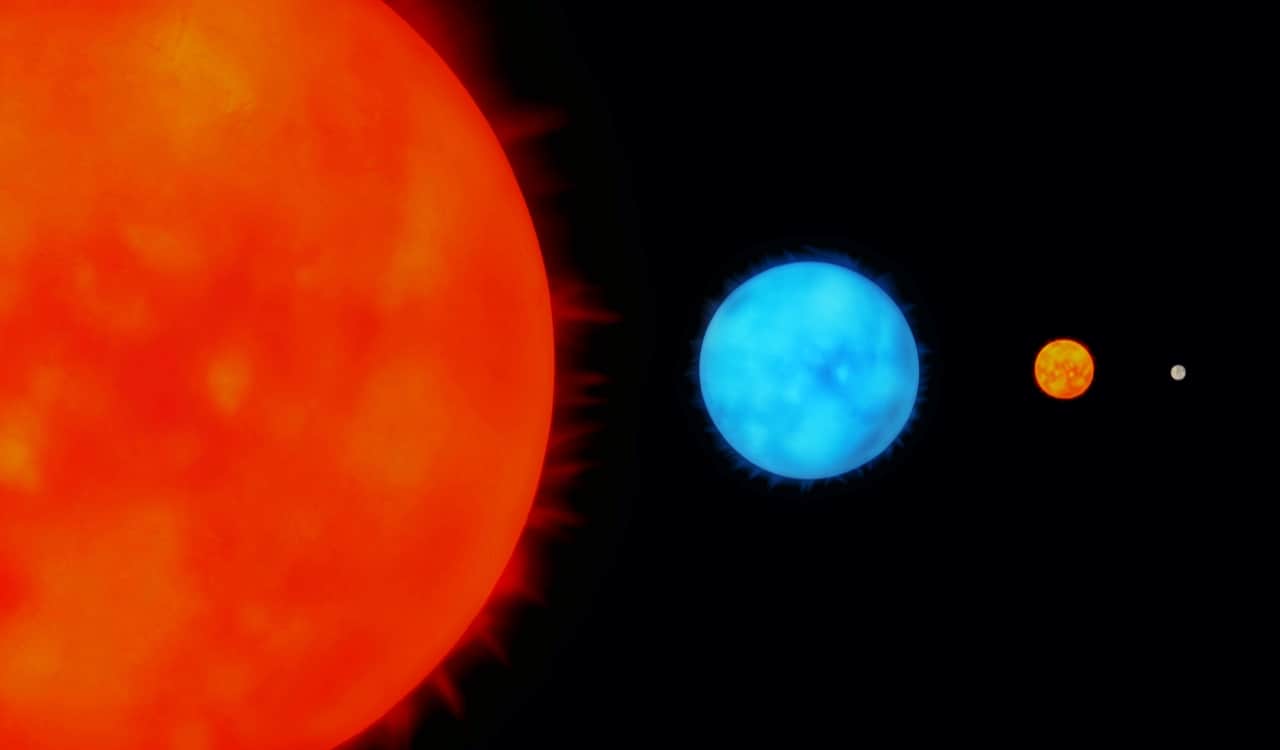
Red Supergiant Stars
- Lifespan: Few Thousand to 1 Million Years
- Class: M to K
As we covered previously, supergiant stars are not exactly common stars in our universe. However, they are common enough for us to know about them. Yet most we see tend to be blue due to their immense brightness. Red Supergiants, on the other hand, are less common. In terms of volume, Red Supergiant stars are actually the largest star type in our universe. However, this does not mean they have the largest overall mass. Usually, like with all red stars, the brightness is much lower for them.
This is obviously due to their temperature scale, which is M to K Class at most in spite of their size. The scale of temperature ranges from 3,450 to 4,100 Kelvin, which is 5,750 to 6,920 degrees Fahrenheit. This is obviously very hot, but we can actually reach temperatures as hot as this in machines on Earth right now. Heck, things like iron will not melt until it reaches 2,800 degrees. Meanwhile, you need to reach 6,192 degrees to melt tungsten, which has to happen in order to mold it. Thus, we could actually send man-made probes to Red Supergiants and get incredibly close.
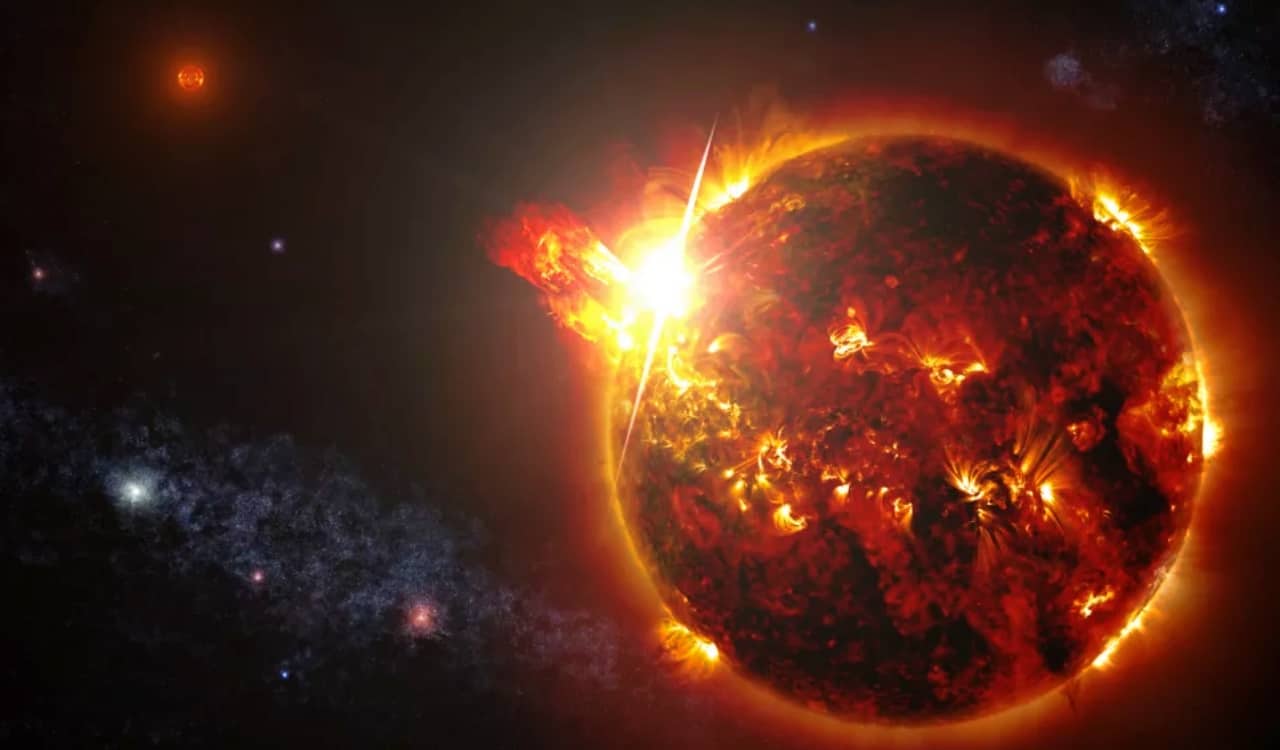
Red Dwarf Stars
- Lifespan: Few Billion To Trillions Of Years
- Class: M
Red Dwarf stars are the most common star of any kind in the Milky Way Galaxy. Compared to other galaxies, we’re one of the youngest. Therefore, if WE have a lot of Red Dwarfs, then it only makes sense to assume that they do too. Making Red Dwarfs potentially the most common star in the universe. It is good that they are so numerous because none of them are bright and are thus quite easy to miss. In fact, despite their number, we cannot see any Red Dwarf with the naked eye on Earth.
There are even some near our solar system, but they don’t really affect anything. The surface temperature for most Red Dwarfs is roughly 2,000 Kelvin. Although, some can reach up to 3,900 Kelvin too. A total of 50 of the 60 nearest stars to our solar system, including Proxima Centauri, are Red Dwarf stars. Dwarf stars in general are long-lived, which is likely why we see so many Red Dwarfs. These stars are capable of living billions of years minimum and likely trillions of years at their max.
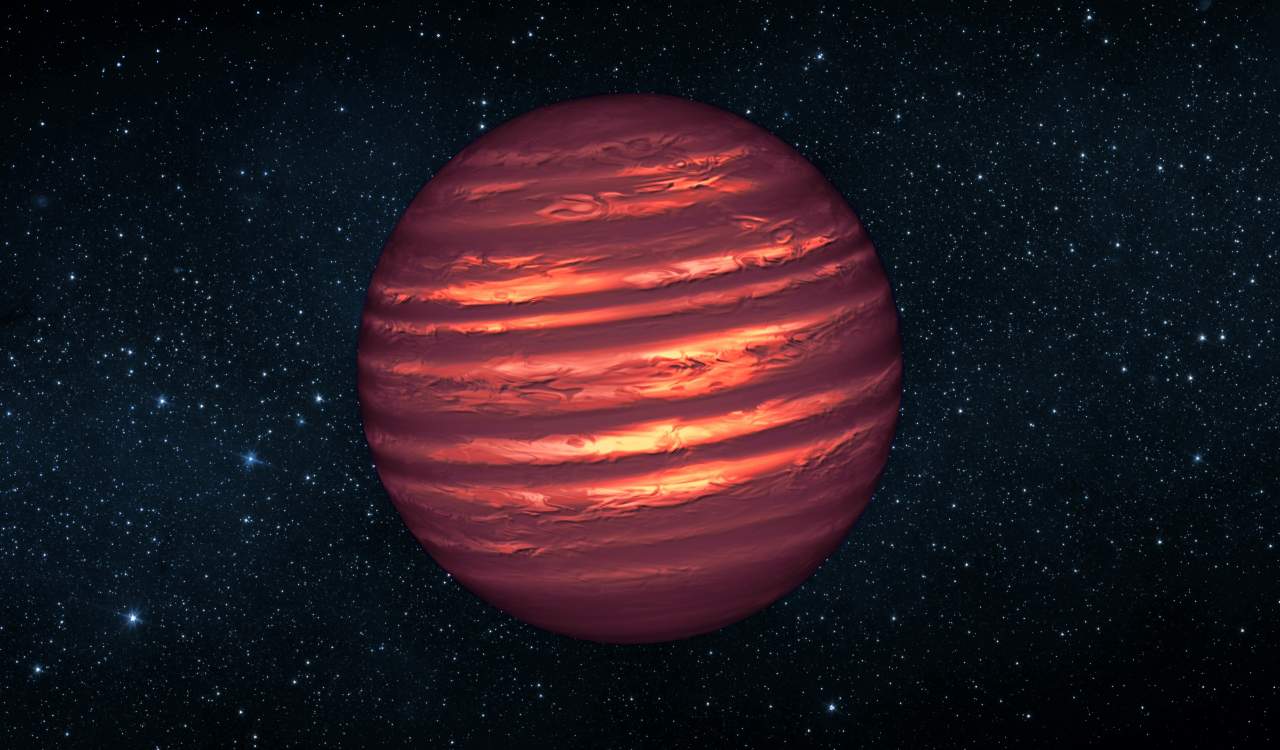
Brown Dwarf Stars
- Lifespan: Roughly 10 Million Years
- Class: M
Like other dwarf stars, the Brown Dwarf star is obviously on the smaller side. However, people should be aware that even in their smaller size, dwarf stars are still huge. Brown Dwarfs are roughly 13 to 80 times more massive than Jupiter. These dwarf stars, however, are not massive enough to sustain any nuclear fusion for ordinary hydrogen into helium. This differs them from the main-sequence star type, putting Brown Dwarfs on the outside of all other dwarf stars.
They are still able to fuse deuterium though. Plus, the largest Brown Dwarfs are able to fuse lithium. Due to their lack of hydrogen, they are not able to maintain a high temperature like other stars. Thus, they progressively cool down as they increase in age. On an interesting note, many do not know Brown Dwarfs exist because they actually appear in different colors to those viewing them. Warmer ones look orange or red while the coolest Brown Dwarfs will appear magenta. They also have no layers or chemical differentiation
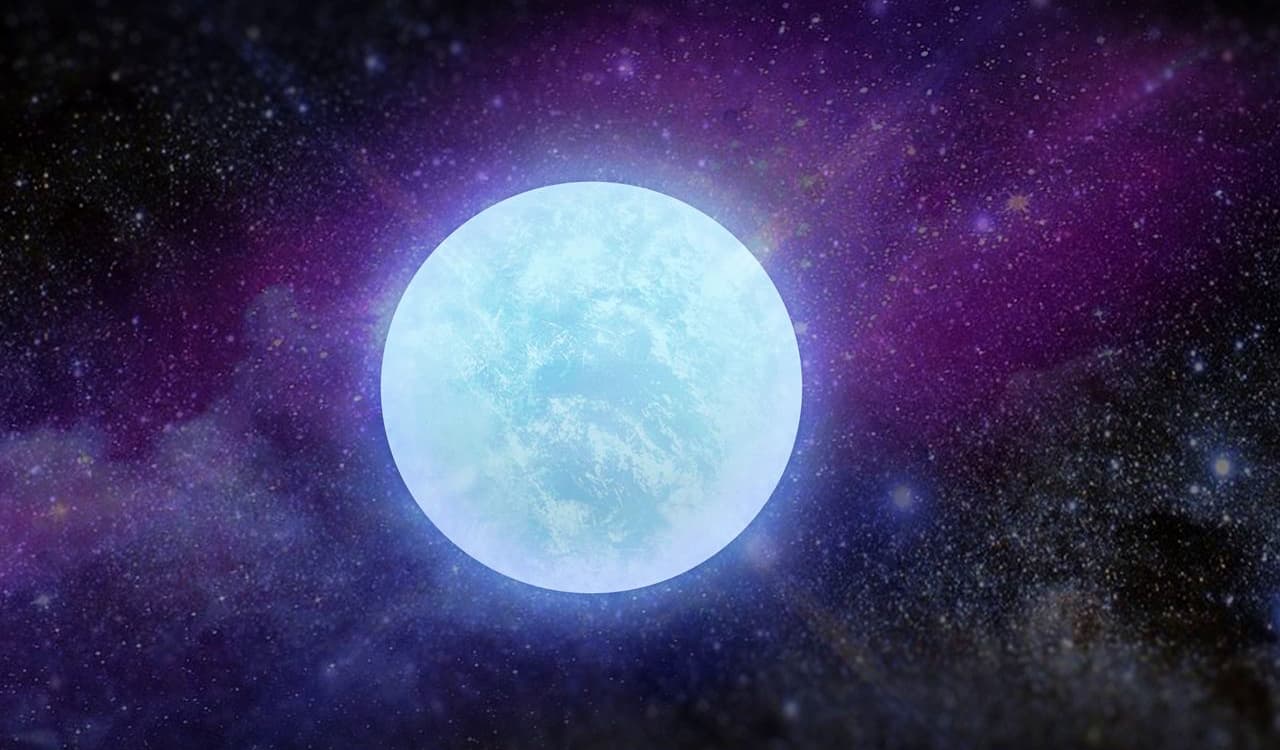
White Dwarf Stars
- Lifespan: Roughly 50 Million Years
- Class: All…Eventually (they start at 100,000 Kelvin then cool over many years)
Likely the most famous of all dwarf stars, the White Dwarf is also one of the most important to science. They are not exactly living stars but, rather, remnants of dead stars. Essentially, they are a stellar core remnant made up of electron-degenerate matter. They are often about as large as our Sun, making them about equal to the size of Earth in terms of total volume. Of course, its brightness will be pretty limited. While temperature tends to lead to brightness, that is not really the case with White Dwarfs. They start off hotter than any other star but will cool down until losing all known energy.
The luminosity actually only comes from the residual thermal energy left behind, as no fusion will take place. White Dwarf stars are pretty rare to find. We only know of 8 out of the 100 star systems closest to our solar system. Many scientists believe the White Dwarf is the last stage in a star’s evolutionary state, at least among regular or smaller stars. That would include roughly 97% of all stars currently in the Milky Way Galaxy. A lot of these stars will actually try to expand to a Red Giant star state, but those that cannot expand out successfully will leave behind its core. That core will then become a White Dwarf.
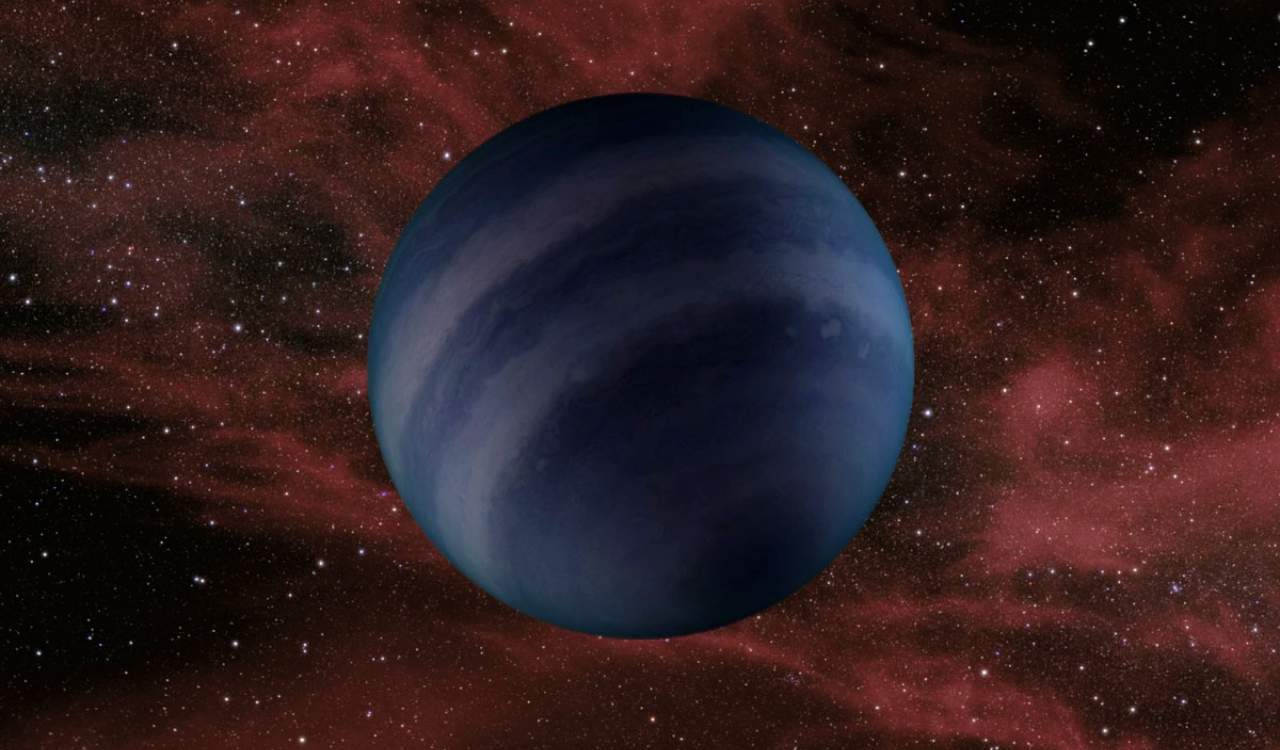
Black Dwarf Stars
- Lifespan: Dead
- Class: None
For many years, Black Dwarf stars were thought to be theoretical only. While they are technically still theoretical, that is only because we’ve never actually seen one. We do know they are possible, mostly because the math and science behind stellar evolution dictate they must one day exist. That is the key part of this though. Currently, no Black Dwarf stars exist among the stars in our universe. Why is that?
White Dwarf stars may only have a major lifespan of about 50 million years, but they do not die off completely even when they continue to lower in temperature. They still have a lot of energy remaining. It would take them over 13 billion years to finally die off and have no energy, or longer than the known age of our universe. That is what a Black Dwarf truly is. A White Dwarf that has lost all energy, and does not have any real heat or light. It is the literal blackness we all one day experience.
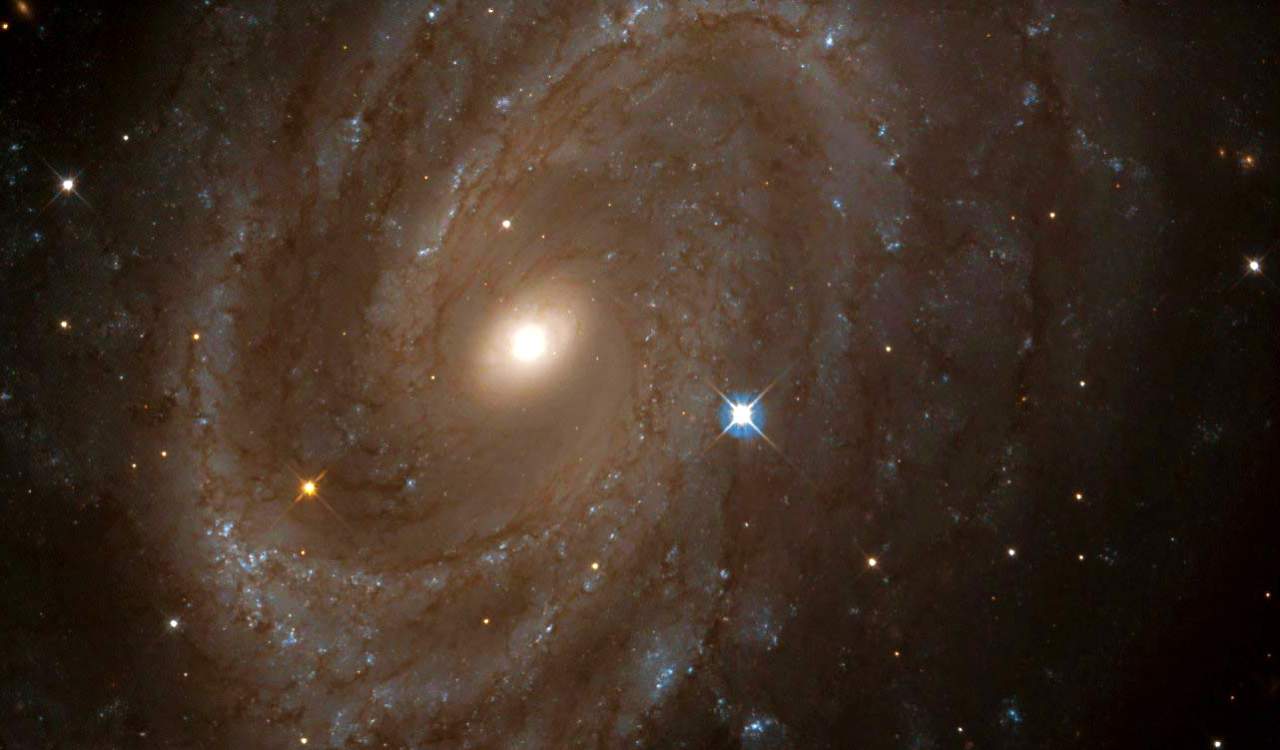
Cepheid Variable Stars
- Lifespan: Measured At 100 Million Years Thus Far
- Class: Various
There are several versions of variable stars, but one that has become quite popular among scientists is the Cepheid Variable star type. These stars pulsate radially, which means both their temperature and even brightness will switch up on a continuous basis. The changes can vary wildly, with the diameter and temperature sometimes being radically different. As weird as they are, astronomers actually feel they offer a lot to the scientific community.
They are part of the cosmic benchmark concept, which uses them to measure or scale galactic and extragalactic distances. We can measure the exact luminosity of Cepheid Variable stars. To do this, we just study its pulsating period and measure from there. That would then allow us to measure its distance from Earth. This is what makes them cosmic benchmarks, as knowing their distance can help us measure the distance to nearby stars or systems too.
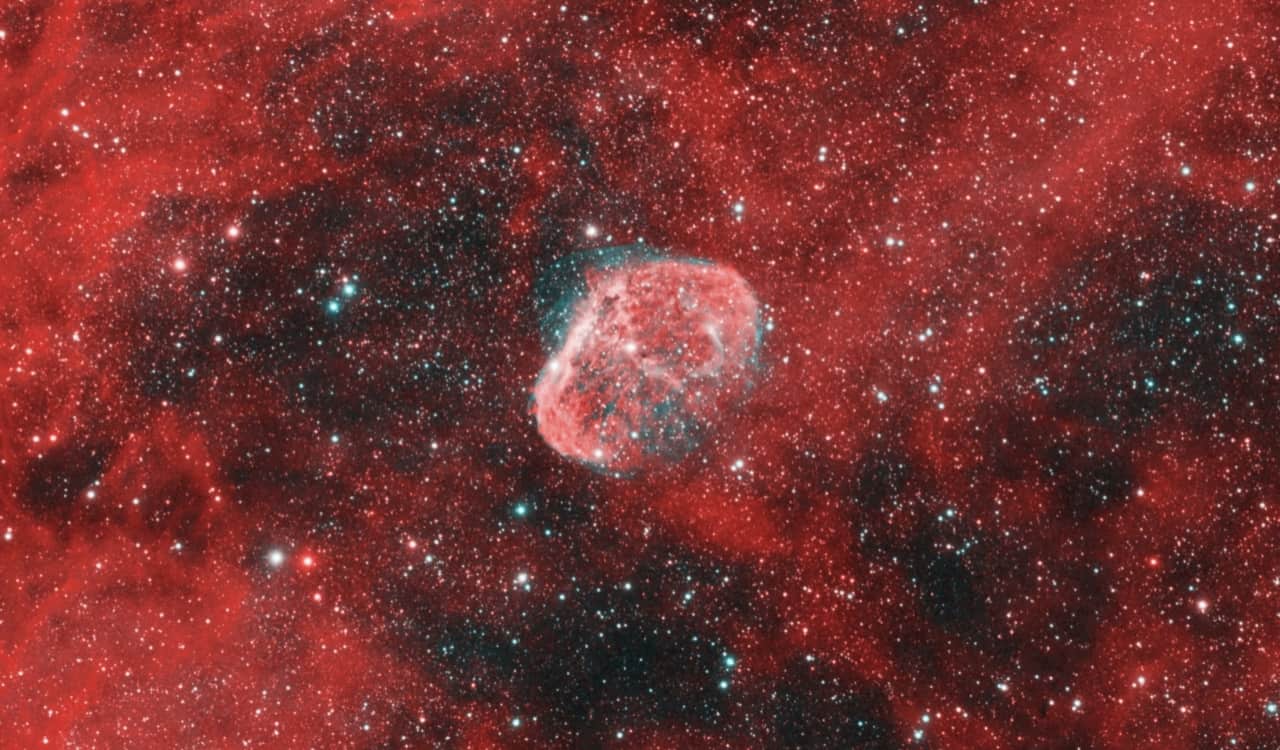
Wolf-Rayet Stars
- Lifespan: Roughly 1 Million Years
- Class: O & B
Wolf-Rayet stars are quite rare to see. These stars are unique in that they have very prominent emission lines made of ionized helium and highly ionized nitrogen or carbon. All evidence supports the fact that the surface temperature for these stars is quite high. On top of that, there are heavy elements present yet a complete depletion of hydrogen. Temperatures for these stars can begin at 20,000 Kelvin and reach up to 210,000 Kelvin. This makes them hotter than nearly every other star type known.
Apparently, WR stars are evolved, massive stars that simply lost their outer hydrogen. This caused them to fuse helium or other heavier elements within their core. Studies show that most of these stars are relatively young. Some actually did develop and fuse hydrogen at the core. Except helium and nitrogen were exposed at the surface, leading to radiation reducing the overall mass. WR stars were technically main-sequence stars before they stopped specific fusion and shed their atmosphere.
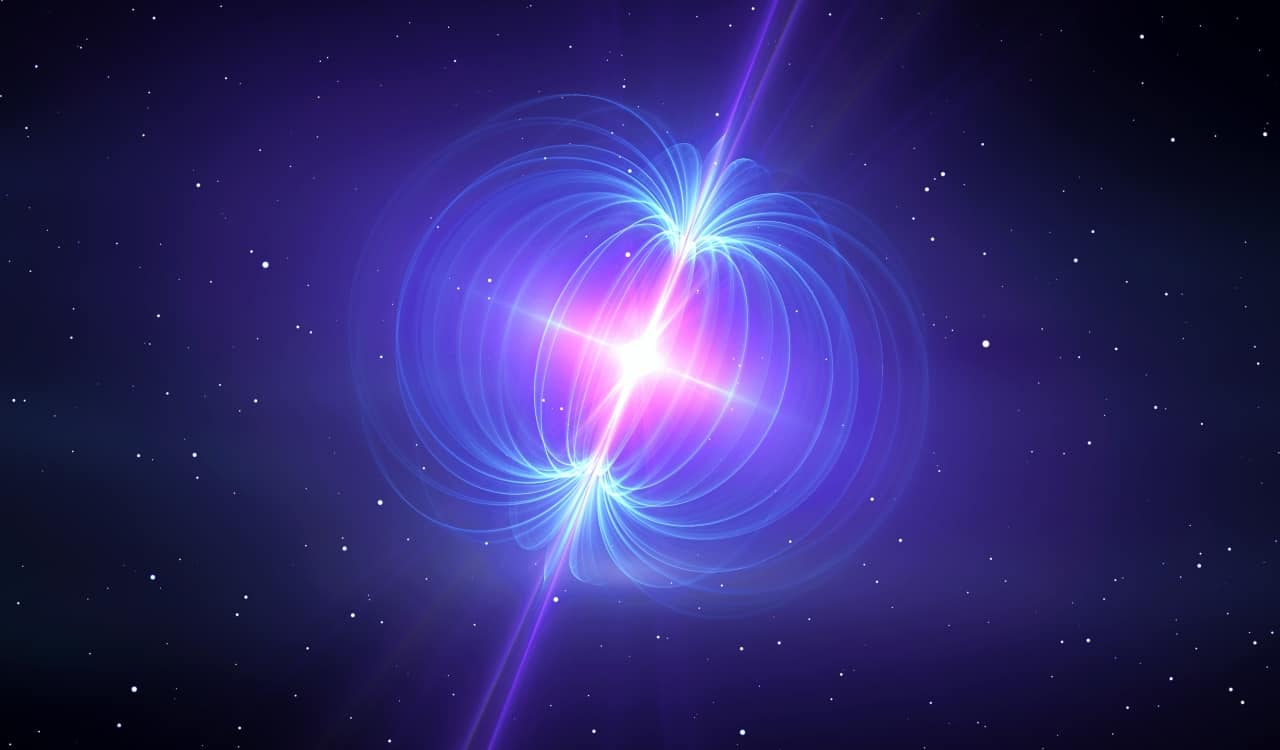
Magnetars
- Lifespan: Around 10,000 Years
- Class: O
Magnetars belong to the family of neutron stars. Those are collapsed cores of the larger supergiant stars. The key to being part of the neutron star conversation is that the supergiant needs to be between 10 to 25 solar masses. It is best if the star is even larger than that if the larger star is incredibly metal-rich. Due to this, we have an idea of what a Magnetar is, so what makes it stand out? These stars in our universe happen to have a massively powerful magnetic field.
The decay from their magnetic field will power the emission of high-energy electromagnetic radiation. This will come in the form of things like x-rays and gamma rays. The Magnetar was theoretical for years dating back to the early 1990s. This came after more than 20 years of not knowing why random gamma rays were spotted coming out of the Large Magellanic Cloud. It explained everything, and now Magnetars are accepted science to explain soft gamma repeaters and even anomalous x-ray pulsars. Even fast radio bursts are now detectable from magnetars.
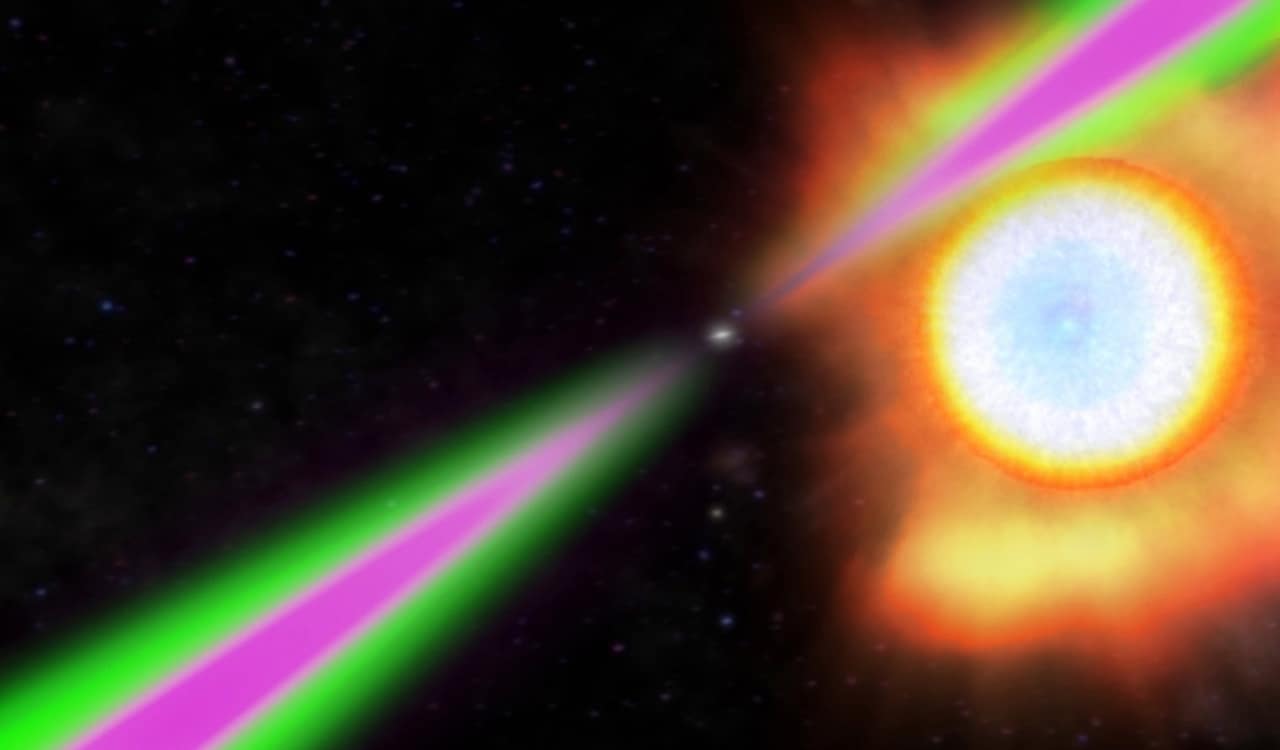
Pulsars
- Lifespan: Around 10 Million Years
- Class: O
In the conversation about neutron stars, we cannot forget the infamous Pulsar. They stand alone within the neutron star area due to being a compact star, which is highly magnetized, that also happens to be rotating. They emit electromagnetic radiation out of their magnetic poles. Of course, we only see this in action when the emission beam is in the direction of Earth. As the name describes, this emission appearance seems to pulsate due to how we observe it. Interestingly, the pulses happen to be very short and precise.
They might only last for mere milliseconds to only a few seconds, depending on the pulsar being viewed. The timing is so accurate, it is said that Pulsars keep time better than any known clock ever created on Earth. We also now believe they are the cause of ultra-high energy cosmic rays, which are important to our universe. Pulsars have become very important to scientists. One example of why is when an observation of a pulsar in a binary neutron star system managed to indirectly confirm gravitational radiation. This was not the design of the observation but became a major discovery during it.
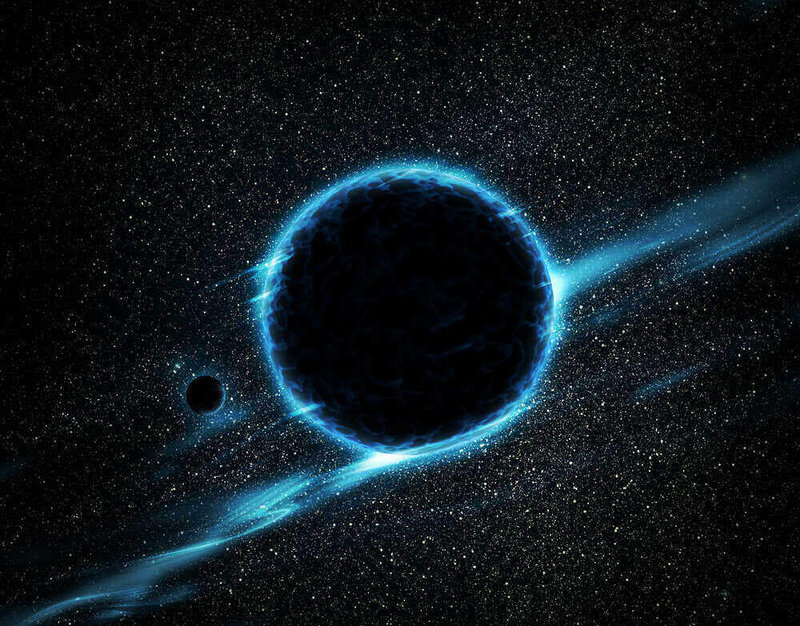
Frozen Stars
- Lifespan: Unknown
- Class: M
Like with Black Dwarf stars, Frozen stars do not yet exist. However, all evidence points to the fact that they will exist one day in our universe. However, none of us will be alive to see it. Even your great-grandchildren x 500 won’t be alive to see it. That is because frozen stars are trillions of years away from being possible. Right now, most stars are mixed with pure hydrogen and helium that will then get to a higher proportion of heavier elements. Yet those elements will be more common inside our average star as the universe moves forward. Due to this, fusion reactions will fail to take place.
Iron will then build up inside of stars and lower their temperature. Without high temps, fusion cannot take place. Lower temps will result in the star getting smaller. This will cause stellar evolution to change, resulting in stars not needing as much gravitational weight to ignite the fusion in their core. As the centuries pass, stars will be born to never grow beyond a smaller size. Of course, nuclear fusion will still occur at the core but at a very low temperature on the surface. This, in turn, will cause low enough temps to allow water and, of course, ice to be on the surface. Thus giving us the “Frozen stars.”
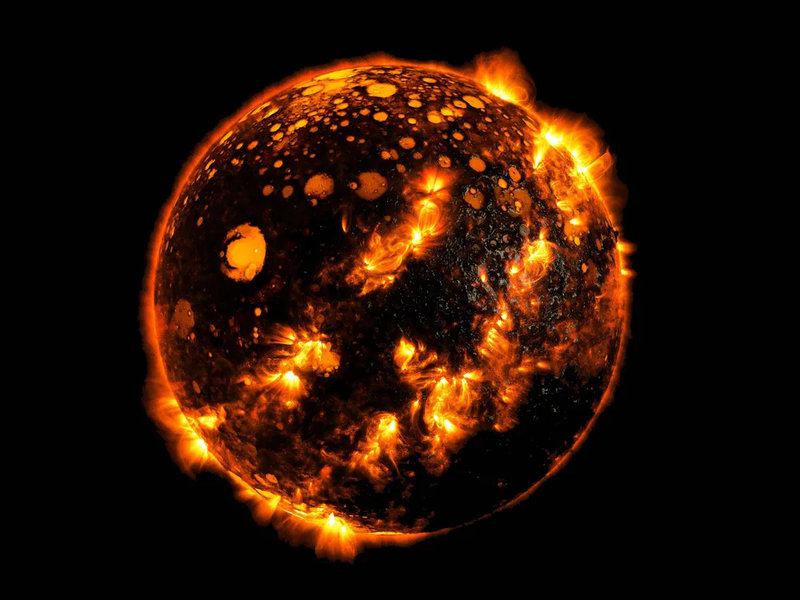
Iron Stars
- Lifespan: Unknown
- Class: M
No, these stars are not random superheroes in the universe that wear suits made of iron to stop galactic crime. Rather, like Frozen stars, Iron stars too are hypothetical. They cannot occur in our universe until the very distant future, simply due to the elements not being present to allow their formation. The idea is that they will form due to cold fusion taking place during quantum tunneling. This will cause light nuclei in our ordinary matter to fuse into iron-56 (most common form of iron) nuclei.
Fission and alpha-particle emissions will then make heavier nuclei decay into iron as well. That will cause stellar-mass objects to convert into cold spheres of iron. However, this can only happen if protons do not decay. There are other unrelated concepts often mistaken for the “Iron star.” Such as what Blue Supergiants are referred to when they have forests of Fe-lines of spectra or the neutron stars that could become iron one day.
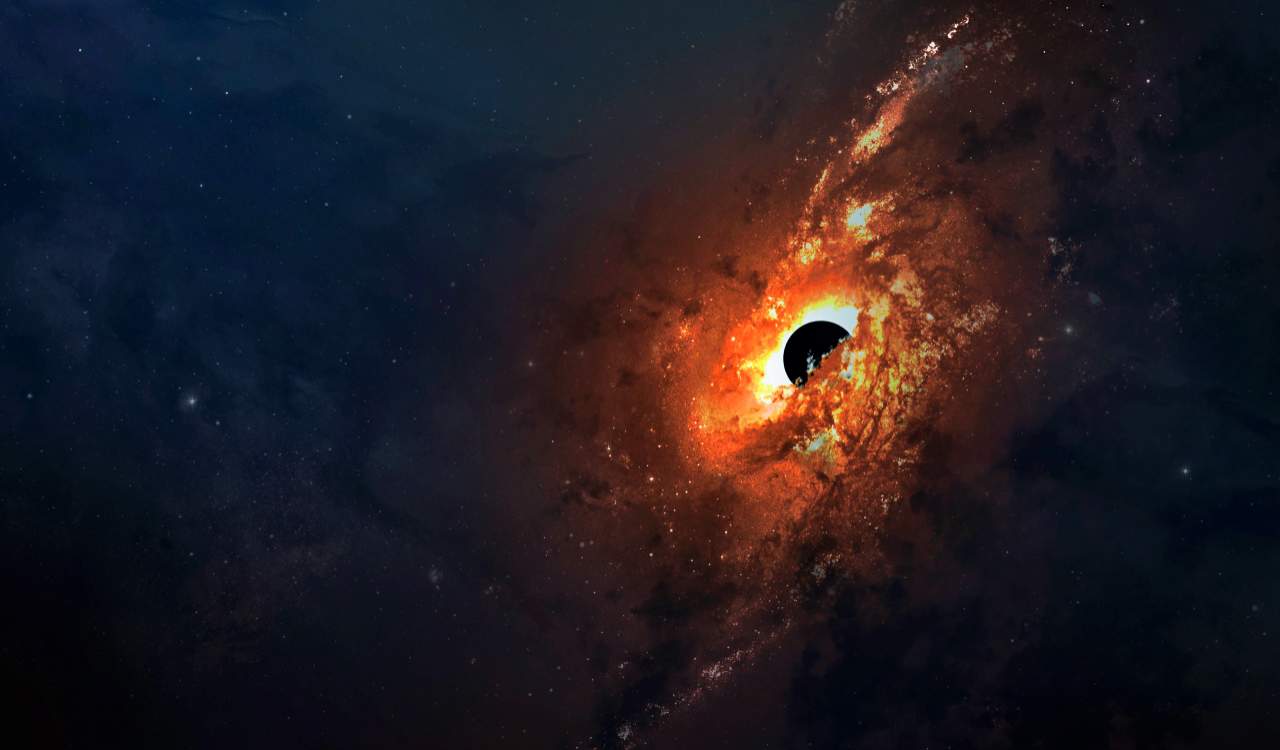
Black Holes
- Lifespan: Longer Than The Age Of Our Universe
- Class: Impossible To Know (They Are Freezing Cold On The Inside, Incredibly Hot On The Outside)
You might be wondering what black holes are doing on a list all about stars. We can understand the confusion. As most know by now, there is a supermassive black hole at the center of most large galaxies. Our Milky Way has one, as do most of our galactic neighbors. You might wonder…how the heck do black holes form either inside galaxies or in random spots around our universe. They actually form when very massive stars collapse at the end of their stellar life cycle. Black holes often start off pretty small. Although that is “galactic small.”
Therefore, still quite big. However, they might start off this way but will often absorb the mass around them. Doing this allows them to grow. Of course, black holes can absorb anything, including stars and even other black holes. This merging between black holes will result in the supermassive version we know well. At one point, black holes were just theoretical. People assumed anything related to them must be a neutron star, but their existence was proven by several researchers working independently by 1971.
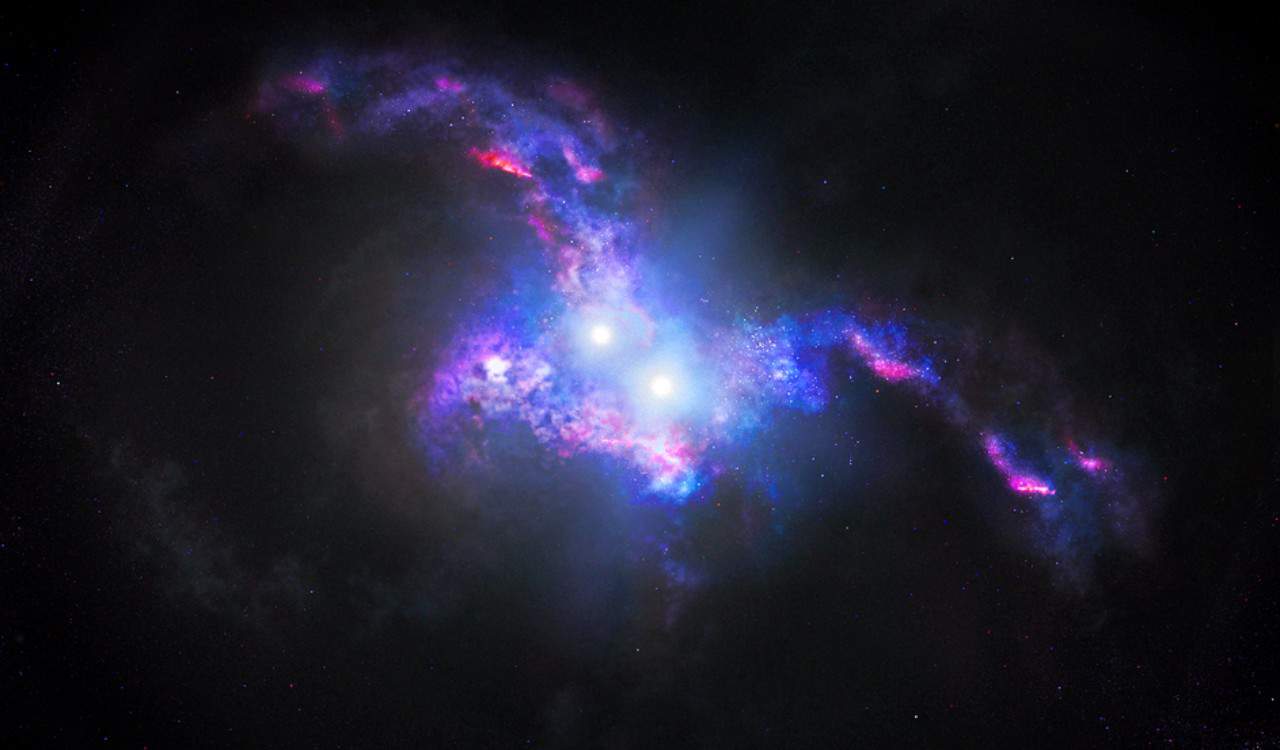
Quasars
- Lifespan: Around 10 Million Years
- Class: O
We cannot bring up black holes and leave out Quasars! These things are actually powered by supermassive black holes. For those unaware, in spite of being pretty close to a large black hole, a Quasar is capable of producing an immense amount of light that is visible several lightyears away. They will usually be well over ten billion times the size of our Sun. Each is surrounded by a gaseous accretion disc.
This disc will fall toward the black hole and the gas within will heat up due to friction and energy that create electromagnetic radiation. The electromagnetic energy will partner up with gravitational radiation to create massive radiant energy. The largest Quasars known have a brightness level thousands of times greater than any galaxy. Of course, they relate to the stars in our universe due to producing heat and light just like stars. Moreover, they are powered by black holes, which obviously formed from a collapsing star. Thus, we count both among the stars in our universe.

